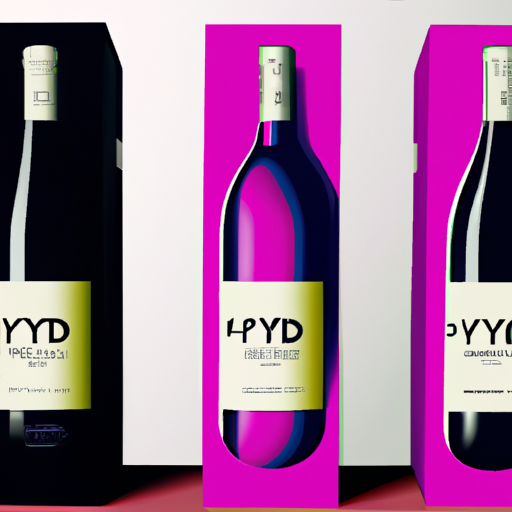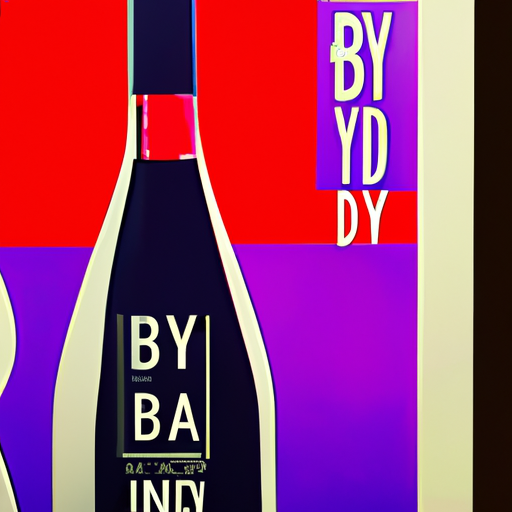
-
Table of Contents
Wine Packaging Trends: Beyond Traditional Labels

When it comes to wine, packaging plays a crucial role in attracting consumers and conveying the brand’s message. In recent years, the wine industry has witnessed a shift in packaging trends, moving beyond traditional labels to more innovative and creative designs. This article explores the emerging wine packaging trends and their impact on consumer perception and purchasing decisions.
The Rise of Minimalist Designs
One of the prominent trends in wine packaging is the rise of minimalist designs. Many wineries are opting for clean and simple labels that focus on essential information and elegant typography. This trend reflects a desire for a more modern and sophisticated aesthetic, appealing to younger consumers who value simplicity and minimalism.
For example, the Australian winery “The People’s Wine” has gained attention for its minimalist label design. The label features a single bold color with a simple logo and typography, creating a visually striking and memorable packaging.
Embracing Sustainability
As consumers become more environmentally conscious, sustainability has become a significant consideration in wine packaging. Wineries are increasingly adopting eco-friendly materials and practices to reduce their carbon footprint and appeal to environmentally conscious consumers.
One example of sustainable wine packaging is the use of lightweight glass bottles. These bottles are not only more environmentally friendly due to reduced energy consumption during production and transportation but also offer cost savings for wineries. Additionally, some wineries are exploring alternative packaging materials such as recycled paper or biodegradable plastics.
Furthermore, wineries are incorporating sustainability messaging on their packaging to communicate their commitment to the environment. This includes using labels made from recycled materials or featuring certifications such as organic or biodynamic farming practices.
Interactive and Engaging Packaging
With the rise of social media and the desire for unique experiences, wineries are exploring interactive and engaging packaging designs. These designs aim to create a memorable and shareable experience for consumers, enhancing brand awareness and loyalty.
One notable example is the augmented reality (AR) wine labels. By scanning the label with a smartphone, consumers can unlock interactive content such as videos, tasting notes, or even virtual tours of the winery. This technology not only provides an engaging experience but also allows wineries to share their story and educate consumers about their products.
Another example is the use of NFC (Near Field Communication) technology in wine packaging. NFC-enabled labels allow consumers to tap their smartphones on the label to access additional information about the wine, such as food pairing suggestions or winemaking techniques. This interactive packaging creates a seamless and personalized experience for consumers.
Artistic and Creative Labels
While minimalist designs have gained popularity, there is still a place for artistic and creative labels in the wine industry. Many wineries are using unique illustrations, vibrant colors, and unconventional shapes to stand out on the shelves and capture consumers’ attention.
For instance, the Spanish winery “Bodegas Volver” has gained recognition for its artistic label designs. The labels feature intricate illustrations inspired by Spanish culture and history, creating a visually captivating packaging that tells a story.
Additionally, wineries are collaborating with artists and designers to create limited-edition labels that are collectible and highly sought after by wine enthusiasts. These collaborations not only elevate the brand’s image but also provide a platform for artists to showcase their work.
Personalization and Customization
Consumers today crave personalized experiences, and wineries are leveraging this trend by offering customizable packaging options. From personalized labels to engraved bottles, wineries are providing consumers with the opportunity to create a unique and memorable gift or keepsake.
For example, the online wine retailer “Etching Expressions” allows customers to personalize wine bottles with custom messages or even engraved images. This customization option adds a personal touch and makes the wine bottle a thoughtful and memorable gift.
Furthermore, wineries are using technology to enable personalized packaging experiences. Some companies offer online platforms where consumers can design their own labels, choosing from various templates, fonts, and colors. This level of customization allows consumers to create a wine bottle that reflects their personality or commemorates a special occasion.
Summary
As the wine industry evolves, packaging trends are shifting beyond traditional labels to embrace minimalist designs, sustainability, interactivity, artistic creativity, and personalization. These trends reflect changing consumer preferences and the desire for unique and engaging experiences. Wineries that adapt to these trends can differentiate themselves in a competitive market, attract new consumers, and build brand loyalty. By understanding and leveraging these packaging trends, wineries can create a lasting impression and enhance the overall wine-drinking experience for consumers.
